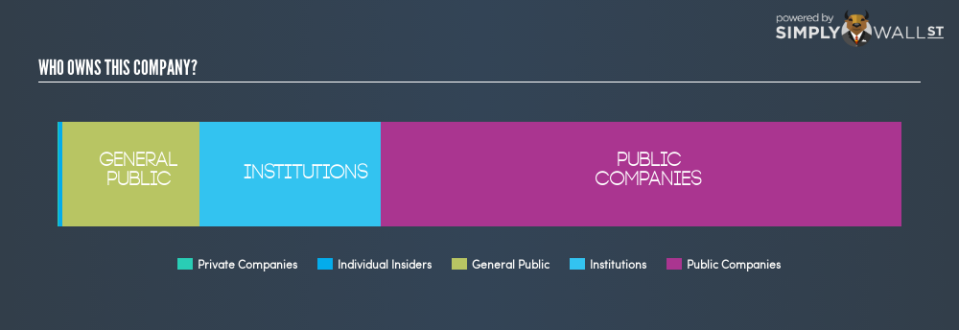Do You Know Who Else Invests In REA Group Limited (ASX:REA)?

In this analysis, my focus will be on developing a perspective on REA Group Limited’s (ASX:REA) latest ownership structure, a less discussed, but important factor. A company’s ownership structure is often linked to its share performance in both the long- and short-term. The same amount of capital coming from an activist institution and a passive mutual fund has different implications on corporate governance, which is a decisive factor for a long-term investor. It also impacts the trading environment of company shares, which is more of a concern for short-term investors. Therefore, it is beneficial for us to examine REA’s ownership structure in more detail.
View our latest analysis for REA Group
Institutional Ownership
Institutions account for 21.5% of REA’s outstanding shares, a significant enough holding to move stock prices if they start buying and selling in large quantities, especially when there are relatively small amounts of shares available on the market to trade. However, as not all institutions are alike, such high volatility events, especially in the short-term, have been more frequently linked to active market participants like hedge funds. In the case of REA, investors need not worry about such volatility considering active hedge funds don’t have a significant stake. However, we should dig deeper into REA’s ownership structure and find out how other key ownership classes can affect its investment profile.
Insider Ownership
I find insiders are an important group of stakeholders, who are directly involved in making key decisions related to the use of capital. In essence, insider ownership is more about the alignment of shareholders’ interests with the management. REA insiders may only hold a a minor stake in the company, but this is a relatively significant holding given it is a large-cap stock. A higher level of insider ownership has been linked to management executing on high-returning projects instead of expansion projects for the sake of apparent growth. It would also be interesting to check what insiders have been doing with their shareholding recently. Insider buying can be a positive indicator of future performance, but a selling decision can be simply driven by personal financial requirements.
General Public Ownership
A big stake of 16.2% in REA is held by the general public. With this size of ownership, retail investors can collectively play a role in major company policies that affect shareholders returns, including executive remuneration and the appointment of directors. They can also exercise the power to decline an acquisition or merger that may not improve profitability.
Private Company Ownership
Another important group of owners for potential investors in REA are private companies that hold a stake of 0.2% in REA. These are companies that are mainly invested due to their strategic interests or are incentivized by reaping capital gains on investments their shareholdings. However, an ownership of this size may be relatively insignificant, meaning that these shareholders may not have the potential to influence REA’s business strategy. Thus, investors not need worry too much about the consequences of these holdings.
Next Steps:
The company’s high institutional ownership makes margin of safety a very important consideration to existing investors since long bull and bear trends often emerge when these big-ticket investors see a change in long-term potential of the company. This will allow investors to reduce the impact of non-fundamental factors, such as volatile block trading impact on their portfolio value. However, ownership structure should not be the only focus of your research when constructing an investment thesis around REA. Instead, you should be evaluating company-specific factors such as the intrinsic valuation, which is a key driver of REA Group’s share price. I urge you to complete your research by taking a look at the following:
Future Outlook: What are well-informed industry analysts predicting for REA’s future growth? Take a look at our free research report of analyst consensus for REA’s outlook.
Past Track Record: Has REA been consistently performing well irrespective of the ups and downs in the market? Go into more detail in the past performance analysis and take a look at the free visual representations of REA’s historicals for more clarity.
Other High-Performing Stocks: Are there other stocks that provide better prospects with proven track records? Explore our free list of these great stocks here.
NB: Figures in this article are calculated using data from the last twelve months, which refer to the 12-month period ending on the last date of the month the financial statement is dated. This may not be consistent with full year annual report figures.
To help readers see past the short term volatility of the financial market, we aim to bring you a long-term focused research analysis purely driven by fundamental data. Note that our analysis does not factor in the latest price-sensitive company announcements.
The author is an independent contributor and at the time of publication had no position in the stocks mentioned. For errors that warrant correction please contact the editor at editorial-team@simplywallst.com.

 Yahoo Finance
Yahoo Finance 

